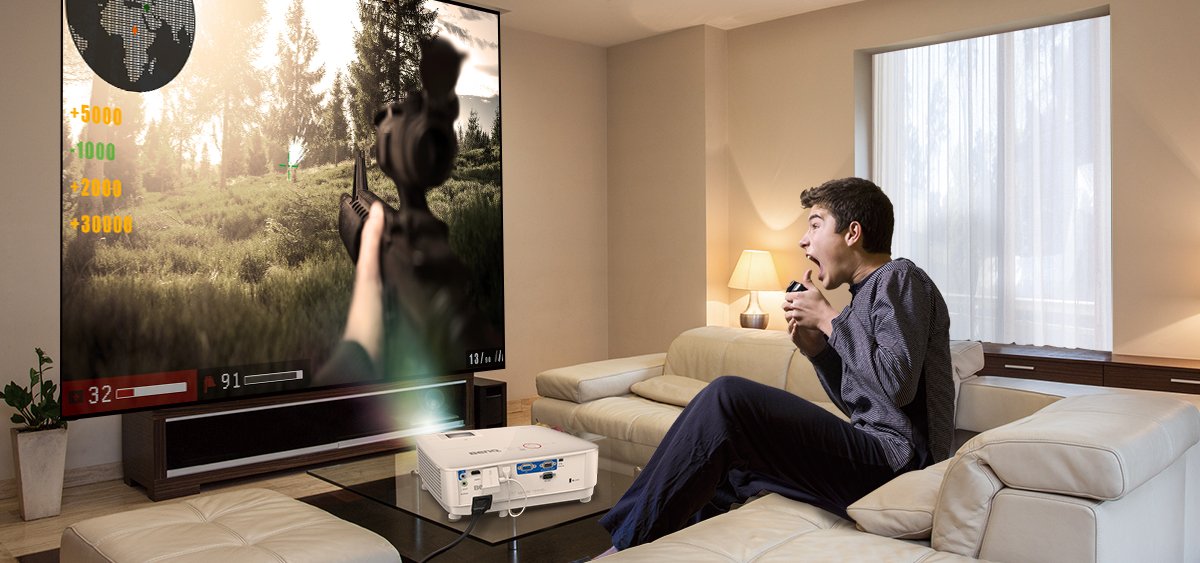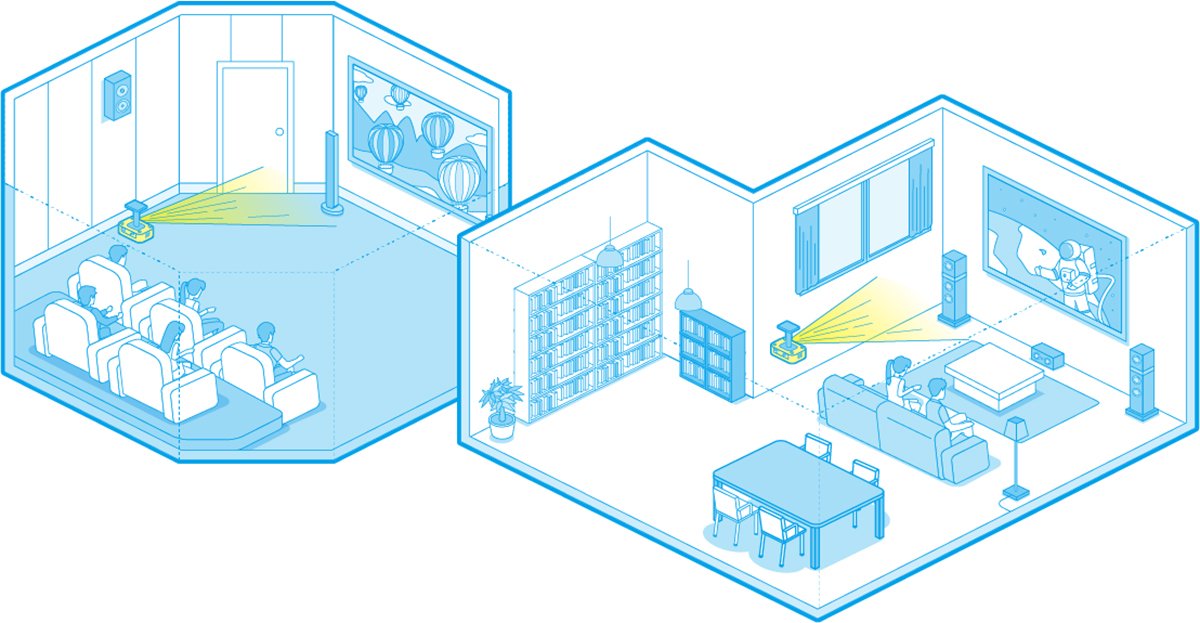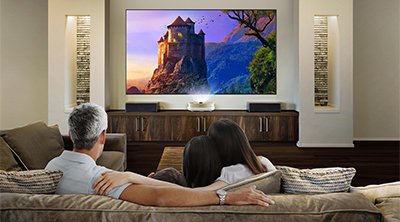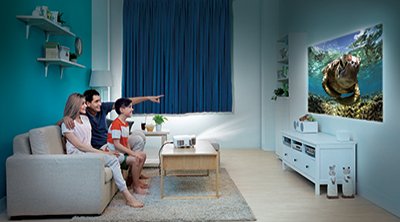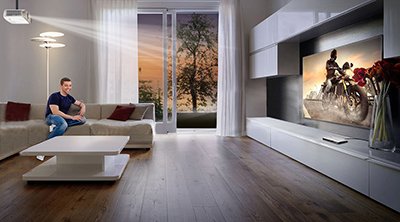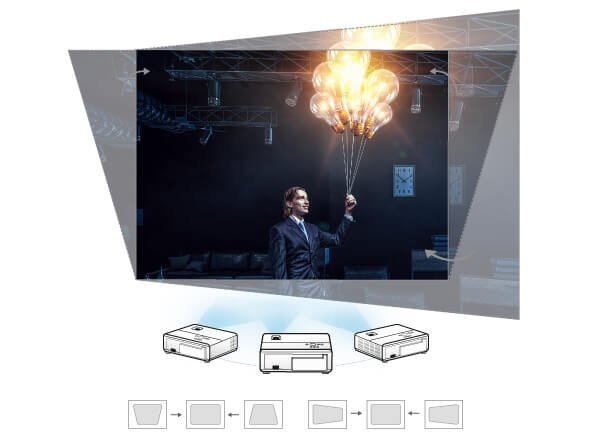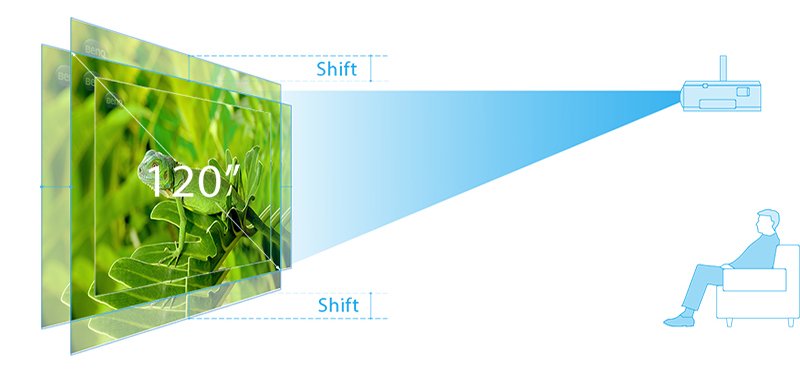Not all small apartments are built the same, so there will be cases where a projector cannot be perfectly centered in front of a screen or wall. However, you can easily fix tilted or skewed images by using vertical/horizontal keystone correction and lens shift! Experience the immersive thrill of a huge screen at home!
What’s the difference between the two? Keystone correction is based on a digital correction, while lens shift is a physical mechanism. Lens shift allows the lens to move up, down, left, and right within a certain range. This allows the image to be moved vertically or horizontally without causing a keystone effect (trapezoidal distortion).
If the projector can be mounted on the ceiling or placed on a table aligned to the center of the screen, only the "screen size @ distance" information is needed when selecting a projector. But if the projector cannot be aligned to the center of the screen leading to screen distortion, the projector must be equipped with keystone correction or lens shift design. Some projectors offer vertical keystone correction, while others include both vertical and horizontal keystone correction. If the projector can be aligned to the center of the screen but must be tilted at an angle to fill the screen, then only vertical keystone correction is needed to project images fully and accurately. But if the projector cannot be aligned to the center of the screen due to other objects or has limited placement, a model with both vertical and horizontal keystone correction is needed.
